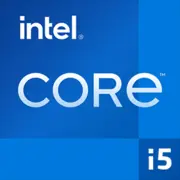Intel Core i5-6600K

Intel Core i5-6600K: Panoramica e attualità nel 2025
Introduzione
Il processore Intel Core i5-6600K, rilasciato nel 2015, è diventato uno dei simboli dell'era Skylake. Nonostante la sua età, è ancora presente in assemblaggi budget e sistemi di appassionati. In questo articolo esploreremo quanto sia attuale questo chip nel 2025, come utilizzarlo correttamente e per chi è adatto.
1. Caratteristiche principali: Architettura, processo produttivo e caratteristiche chiave
Architettura Skylake
Il processore si basa sull'architettura Skylake (6ª generazione di Intel Core). È il primo chip compatibile con DDR4, un significativo passo in avanti. Il processo produttivo è di 14 nm, che nel 2015 era una soluzione all'avanguardia, ma nel 2025 appare obsoleto rispetto ai chip da 5-7 nm.
Core e thread
- 4 core e 4 thread (Hyper-Threading assente).
- Frequenza di base: 3.5 GHz, modalità turbo: 3.9 GHz.
- Moltiplicatore sbloccato per l'overclocking — il principale “punto forte” dell'indice “K”.
Grafica e cache
- Grafica integrata Intel HD Graphics 530: supporta 4K@60 Hz tramite DisplayPort, ma è debole per i giochi (solo vecchi titoli a impostazioni basse).
- Cache L3: 6 MB — modestamente per attività multithread, ma sufficiente per i giochi degli anni 2010.
Prestazioni
- Geekbench 6 (2025): Single-Core — 1409, Multi-Core — 3996.
- In carichi single-thread, il chip è paragonabile al Ryzen 3 3300X, ma nella multithread perde anche rispetto a CPU moderne di fascia budget.
2. Schede madri compatibili: Socket e chipset
Socket LGA 1151 (v1)
Le schede madri per i5-6600K utilizzano il socket LGA 1151 di prima generazione. I chipset supportati:
- Z170: Per l'overclocking (ad esempio, ASUS Z170-A).
- H170 / B150 / H110: Senza overclocking, adatte per PC da ufficio.
Caratteristiche della scelta nel 2025
- Nuove schede per LGA 1151 non vengono più prodotte. Prezzi per i rimanenti:
- Z170: $80–120 (rigenerate o NOS — New Old Stock).
- B150: $50–70.
- Si consiglia di cercare schede con USB 3.1 e M.2 (ad esempio, MSI Z170A Gaming M5), per collegare unità moderne.
3. Memoria supportata: DDR4 e limitazioni
Tipi di memoria
- Ufficialmente: DDR4-2133 MHz (senza overclocking).
- Con overclocking: fino a DDR4-3000+ (dipende dalle capacità della scheda madre).
- Capacità massima: 64 GB (4 slot × 16 GB).
Compatibilità con DDR5
L'i5-6600K non supporta DDR5. Nel 2025, questo è un grave svantaggio, poiché DDR5 è diventato lo standard per i nuovi sistemi.
4. Alimentatori: Raccomandazioni sulla potenza
Consumo energetico
- TDP: 91 W.
- Con overclocking fino a 4.5 GHz, il consumo raggiunge i 120–130 W.
Scelta dell'alimentatore
- Minimo: 450 W (per sistemi senza scheda video dedicata).
- Con una scheda video di livello NVIDIA GTX 1660: 550 W (ad esempio, Corsair CX550M, $60).
- Per l'overclocking: alimentatore con certificazione 80+ Gold e potenza di 650 W (Be Quiet! Pure Power 12 M, $90).
5. Pro e contro dell'i5-6600K nel 2025
Vantaggi
- Potenziale di overclocking: Offre un aumento delle prestazioni fino al 15–20%.
- Efficienza energetica: Inferiore ai chip moderni, ma decente per un 14 nm.
- Prezzo: Nel mercato secondario — $40–60, nuovi esemplari (rari) — $100–120.
Svantaggi
- 4 thread: Applicazioni multithread (rendering, streaming) funzionano male.
- Nessun supporto PCIe 4.0/5.0: Limita la velocità degli NVMe e delle schede video moderne.
- Piattaforma obsoleta: Non supporta nuove tecnologie (Wi-Fi 6E, Thunderbolt 4).
6. Scenari di utilizzo
Giochi
- Progetti eSport: CS2, Valorant — 60+ FPS a impostazioni medie (con GPU di livello RTX 3050).
- AAA games del 2025: Richiedono un minimo di 6 core. In Hogwarts Legacy 2 o GTA VI è possibile avere cali sotto i 30 FPS.
Attività lavorative
- Applicazioni per ufficio: Ideale.
- Programmazione, grafica: Accettabile per compiti leggeri (Photoshop, Visual Studio).
Multimedia
- Streaming video 4K: HD 530 gestisce la decodifica H.265.
- Montaggio video: Solo a risoluzione 1080p e con progetti semplici.
7. Confronto con i concorrenti
AMD Ryzen 5 1600 (2017)
- 6 core / 12 thread, ma IPC inferiore. Nel 2025 è migliore per attività multithread. Prezzo: $50–70 (usato).
Intel Core i3-12100F (2022)
- 4 core / 8 thread, 10 nm, Single-Core — 1800+ in Geekbench 6. Nuove piattaforme (DDR4/DDR5, PCIe 5.0). Prezzo: $110 (nuovo).
Conclusione: l'i5-6600K perde rispetto ai moderni CPU di budget, ma vince nel prezzo nel mercato secondario.
8. Suggerimenti per l'assemblaggio
- Raffreddamento: Dissipatore di livello DeepCool Gammaxx 400 ($25) o liquid cooling per overclocking (NZXT Kraken X53, $130).
- Memorie: SSD obbligatorio (ad esempio, Kingston A2000 1 TB, $80).
- BIOS: Aggiornare all'ultima versione per migliorare la stabilità.
- Scheda video: Non oltre RTX 3060 / RX 6600, per evitare colli di bottiglia.
9. Conclusione finale: A chi è adatto l'i5-6600K?
- Giocatori budget: Che assemblano PC per $300–400 con componenti usati.
- Proprietari di sistemi obsoleti: Per aggiornamenti senza sostituire la scheda madre.
- Appassionati: Amanti degli esperimenti con l'overclocking di hardware “old school”.
Perché no?
Se hai bisogno di lavorare con AI, rendering o giochi del 2025 — scegli processori moderni (Ryzen 5 7600, Core i5-13400F).
Conclusione
L'Intel Core i5-6600K nel 2025 è un esempio di chip “sopravvissuto”, che può ancora servire in scenari di nicchia. Non è adatto per carichi elevati, ma rimane un’ottima scelta per coloro che apprezzano il budget e la nostalgia per l'era Skylake.
Di base
Specifiche della CPU
Specifiche della memoria
Specifiche della GPU
Varie
Classifiche
Rispetto ad altre CPU
Condividi sui social media
Oppure linkaci
<a href="https://cputronic.com/it/cpu/intel-core-i5-6600k" target="_blank">Intel Core i5-6600K</a>